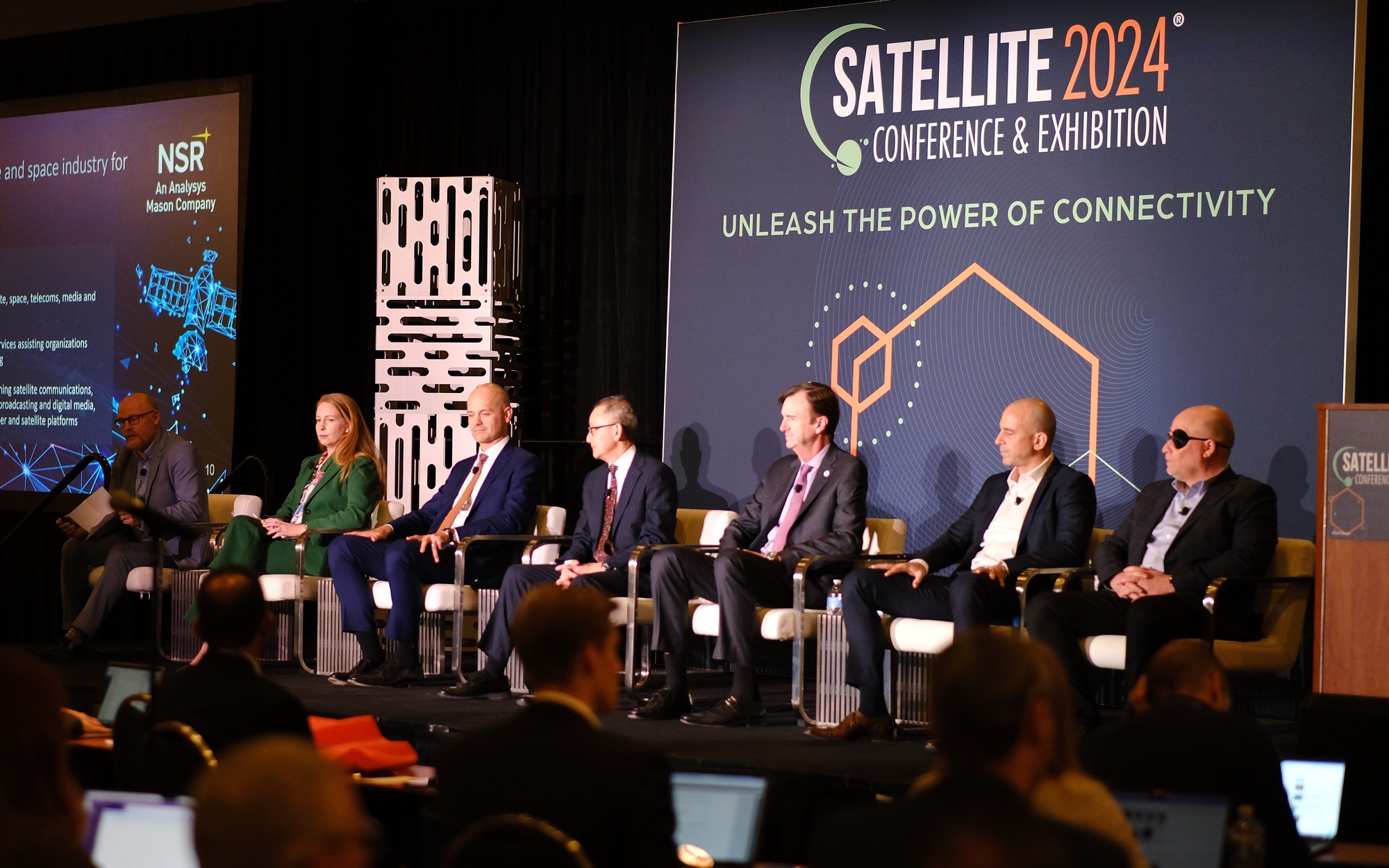WASHINGTON — The launch industry is negotiating a transition into new families of launch vehicles, working to bring additional capacity into the market while seeking out competitive advantages against a growing number of competitors.
A panel at the Satellite 2024 conference March 18 features two companies that recently completed the first successful launches of new vehicles and four others working on new launch vehicles, in some cases while operating existing ones.
“Right now we’re in transition,” said Mark Peller, vice president of Vulcan development at United Launch Alliance, citing the successful inaugural launch of Vulcan Centaur Jan. 8. “We’ve wrung out the Vulcan system and now our focus is getting up to a steady launch cadence.”
He said the company has “many” Vulcan launches planned but was not more specific. The next launch, carrying Sierra Space’s Dream Chaser, is expected no earlier than this summer, depending on when that spacecraft completes environmental tests and other prelaunch preparations.
Mitsubishi Heavy Industries (MHI) successfully launched its H3 rocket Feb. 16 after the rocket’s inaugural launch failed nearly a year earlier, a setback that Iwao Igarashi, vice president and general manager at MHI, called a “nightmare.” “There were no major problems with the rocket” on its second flight, he said.
Next up is Ariane 6. “We are very excited to announce that, in approximately 90 to 100 days, we’re going to see the inaugural flight of our new Ariane 6 rocket,” said Steven Rutgers, chief commercial officer of Arianespace. That would put the launch in the latter half of June, the beginning of a launch period previously announced by the European Space Agency that extends through July.
Two other companies, Relativity Space and Rocket Lab, are in earlier phases of development of medium-class reusable launch vehicles. Relativity is still targeting a 2026 launch of its Terran R rocket, said Josh Brost, chief revenue officer at the company, as it tests the rocket’s Aeon R engines and builds out a new production facility in Long Beach, California.
Rocket Lab, which operates the Electron small launch vehicle, previously said its larger Neutron rocket could be ready as soon as the end of the year, although it has yet to begin full-scale tests of that vehicle’s Archimedes engine. Adam Spice, Rocket Lab’s chief financial officer, reiterated that schedule on the panel.
All those companies are trying to catch up to SpaceX, which performed 96 launches of its Falcon 9 and Falcon Heavy rockets in 2023 and has a goal of 148 launches this year, said Stephanie Bednarek, vice president of commercial sales. “We’re aiming for more than that the following year.”
That is taking place as the company develops Starship, with a much larger capacity and potentially far lower per-kilogram prices. Any transition from Falcon to Starship will be gradual, Bednarek said. “We’ll be operating both systems for quite a while, so it’s not a hard cutover from Falcon to Starship,” she said. “We’ll be flying Falcon as long as our customers want to fly it.”
While launch companies continue to argue there is a lack of capacity in the market, particularly as companies transition to next-generation vehicles, they are looking for ways to differentiate themselves to gain a particular advantage. Peller noted that ULA is emphasizing its ability to provide custom trajectories for customers, leveraging the performance of Vulcan Centaur.
“Can you charge more money for bespoke services? Absolutely, but it needs to be within a competitive bandwidth,” said Rutgers. One example, he said, is helping arrange transportation for customers’ payloads to the launch site with large cargo aircraft that are in short supply or with ships.
Bednarek said SpaceX will provide custom services of customers, such as optimizing trajectories for customers buying the full performance of a Falcon 9 or Falcon Heavy. “We’re also able to play matchmaking services on occasion,” she said. “When someone doesn’t need the full performance of the vehicle but has a unique orbit, we can often find someone else to pair along.”
As other companies introduce their launch vehicles, they are hoping to find the right combination of cost, performance and other attributes that can stand up to SpaceX’s current advantages. “Hopefully we can cause Stephanie a few sleepless nights,” Spice said.
Related

Dr. Thomas Hughes is a UK-based scientist and science communicator who makes complex topics accessible to readers. His articles explore breakthroughs in various scientific disciplines, from space exploration to cutting-edge research.








